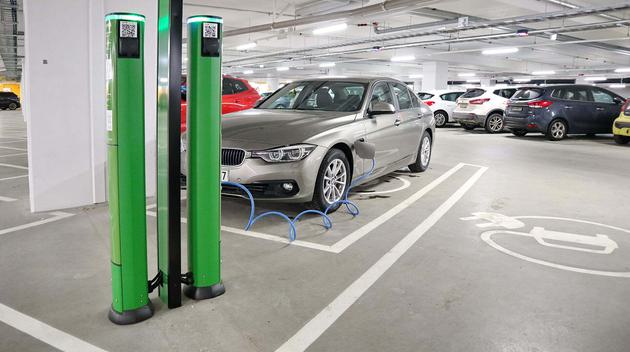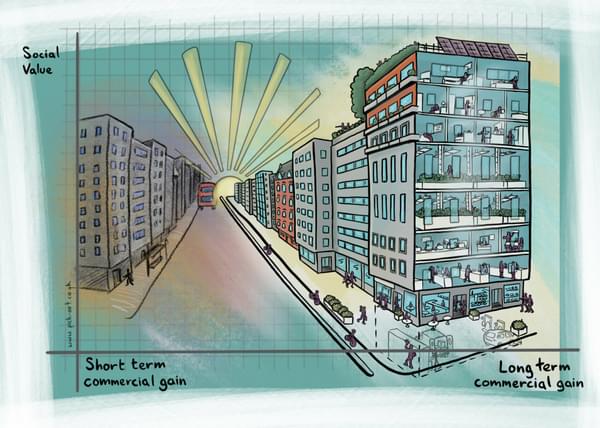Back to Articles
EVs, batteries and fire: balancing the benefits and risks in car parks
27th Jun 2022
Electric Vehicles (EVs) are fundamentally changing the environmental effects of travel. Additionally, they have changed the hazards posed to the buildings within which EVs are parked; the occupants of those buildings; and fire-fighters. In the race to adopt electric vehicles and roll out EV charging infrastructure, there exists a critical gap: how do you balance the benefits of EV adoption and the risks in the event of a fire?
EVs, charging infrastructure, and the fight to decarbonise
Electric vehicle use is estimated to increase almost 20-fold over the next seven years as petrol and diesel vehicle production ceases in 2030. The Climate Change Committee (CCC) estimates that by 2032, a UK fleet of 23.2 million electric cars will require 325,000 public charging points. This figure does not account for private charge points.
Currently, there are around 32,300* public charging stations in the UK, which means implementation is only going to speed up.
Industry and government are working to roll out charge points in order to catch up with booming electric car sales, including the introduction of regulations that require EV charge points for qualifying residential developments, and newly-built and refurbished non-residential buildings.
The challenge we face today is how to embrace an EV future that appropriately considers fire risk. With no current EV fire regulations to comply with, developers are in unknown territory. So, what are the fire risks associated with EVs in car parks?
EV batteries and car park fire risk
Electric vehicles currently utilise Lithium Ion (Li-ion) battery systems, the fire hazards of which are significantly different from those posed by internal combustion engine (ICE) vehicles. With little research or full-scale EV fire tests, the comparative risk of fire in EVs vs ICE vehicles has yet to be fully quantified.
Media reports have raised the profile of EV fires, but there is limited long-term data. Some current statistics suggest that the overall likelihood of fire in EVs may be lower than in the ICE fleet. Likewise, Hydrock is actively monitoring the development of new technologies such as solid-state batteries which will again change the picture in terms of the overall risks.
Right now, what we know is that, whilst ICE vehicles generate heat and smoke during a fire, comparatively, EV Li-ion batteries generate high levels of toxic gases. The rapid nature of fire spread in EVs and the higher plastic content of modern vehicles poses significant challenges ranging from the control of isolated vehicle fires to the risk of building structural failure.
All of this challenges the current assumptions used in the design of our car parks. Introducing EV charging points to existing car parks changes the hazards to occupants and attending fire crews. Do current alarm systems provide adequate time for people to escape in the event of a fire? Will existing car parks offer sufficient smoke clearance for fire-fighters to access the seat of the fire? Have wider access, escape, containment and structural considerations been accounted for?
What’s the solution?
In lieu of legislation, it’s education.
At the moment, these hazards have not yet been addressed in our current building stock. Legislating this new technology and its use within existing buildings will ultimately require updates to building design guidance, which will need to incorporate research to ensure that future developments account for EVs.
For now, fire engineers and transportation engineers must work hand in hand to provide solutions.
Here are some of the considerations our Fire Engineering, Transportation and Structural Engineering experts look at when working with clients on EV infrastructure:
- Are we using the best practices for developing the car park’s fire strategy, based on current research?
- Are we using the best approaches for assessing smoke management in car parks, taking into account various assumptions, limitations and uncertainties?
- Are we using best practices for modelling EV behaviour, including demand, usage, dwell time and power demand?
- Can EVs and their charging points be located away from escape routes or storey exits?
- Can EVs be parked near to smoke extraction points?
- Can a fire in a car park spread within a building, and/or to an adjoining building? What can we do to limit the fire spread, either retrospectively or when designing new estate layouts?
- Will current suppression systems (i.e., sprinklers, water mist) be effective in controlling EV fires?
- Could separate car parking floors be set aside for conventional vehicles and EVs? Would doing so isolate these new hazards such that suitable protection can be adopted?
- Is there adequate access for attending fire crews? Would separating EV and ICE vehicles aid fire-fighters in identifying the type of vehicle on fire?
- Is the current structural fire resistance adequate?
- What level of fire safety management needs to be adopted?
- When we introduce EV changing points to existing car parks, are we engaging with the fire service to address their requirements?
There are numerous solutions available, and even simple design considerations can make a significant difference to risk. By highlighting these changes to our built environment, we will collectively find the best solution.
*Correct as of June 2022.

























